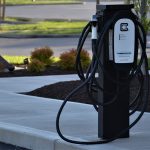by Mark Allewell, CEO at Sensor Networks
While no one expected the South African State of the Nation Address (SONA) to shoot any lights out, we did expect some electrifying election season promises by President Ramaphosa in his annual address. And we got a big one, as the President proclaimed that “the end of load shedding is finally within reach,” stating that the actions taken by the government have already begun bearing fruit, with fewer power interruptions to be expected.
Shortly after this would-be triumphant statement, Eskom – with impeccable timing in its role as the chief instigator in our collective dark comedy – firmly brought us back down to earth by implementing Stage 3 loadshedding. Over the next three days, loadshedding would reach Stage 6, leaving people without power for more than half a day at a time.
With such glaringly public and poorly timed failures, you can bet that most politicians will run a concerted public campaign around the theme of loadshedding – but while politicians use blackouts for political point-scoring, I would rather that the citizens on the ground use this opportunity to reflect on the fact that we can call on the ruling political party, at the reigns of the national government, to implement immediate solutions to decrease the rate of loadshedding on our homes and businesses this year.
I say this because loadshedding offers a unique example of a common South African problem that has produced a deep sense of unity among us, as almost no one is spared from the destructive effects of Stage 6 loadshedding. As we look to the elections in May and the next four years of South African leadership, we have the collective opportunity to call on the government to seize any and all opportunities to decrease the load on our national grid across 2024.
Either that, or we can accept the fact that we will experience another 335 days of power cuts (in effect, South Africans only experienced a combined one month without loadshedding in 2023). After a brief reprieve from loadshedding during the festive season, loadshedding kicked down the door to 2024 and stumbled back into our lives on the 1st of January, painting an ill omen for 2024.
2022 vs 2023: Are blackouts getting better or worse?
According to the latest data sets from the Outlier, we can confirm that in 2023, South Africans were forced to endure the highest degree of loadshedding on record to date. In 2022, we saw 205/365 days of loadshedding – mostly between stages 1 and 4. While already excessive, this pales in comparison to 2023, with daily blackouts across 335 days, largely comprised of loadshedding stages 3 to 6. Not only does this indicate a shocking 73% increase in power cuts year on year, but the number of times the power has gone off each day has almost tripled.
Despite stale predictions by the Energy Council that loadshedding could be brought to an end this year, the future is not looking bright. It is said that insanity is doing the same thing over and over again and expecting different results — as of 2024, the government has repeatedly taken a top-down approach to curing Eskom of its malaise. But different approaches do exist, and our government would be well-advised to start taking a far more innovative approach to this crisis or will risk further shrinking an already-lagging economy. Without immediate action, through the application of new and smart technologies, nothing will change.
In the third quarter of 2023, South Africa experienced an almost across-the-board wipeout in real GDP growth. Each quarter of last year saw our economic activity decrease by 0.2%, double the expected rate of contraction of 0.1%. These tragic results can be attributed, in part, to the impact that loadshedding has had on key drivers of economic growth in South Africa (namely our agricultural sector).
Government must make smarter decisions around our national energy crisis in 2024 if they want to stop this catastrophic shrinkage of our economy and avoid further business closures and subsequent job losses in a country that already grapples with the highest unemployment figures in the world.
Smart tech solutions offer low-hanging fruit
Smart geyser devices offer our beleaguered power utility the means to decrease the load on Eskom by providing a simple solution to lower the degree of loadshedding at a national level. Based on the data drawn from a recent study of 6,809 smart geyser devices across South Africa, it was confirmed that the average geyser’s energy usage, for warming water to a set-point temperature of 51–70°C, was 0.492 kWh.
By modeling this data against a study of 463 electric geysers with a modified lower set-point temperature of 50°C, we can confirm that the average geyser’s energy usage was lower, at 0.357 kWh. This study illustrates a significant degree of savings (0.135 kWh) on geyser energy usage, achieved simply by reducing their set-point temperature to just 50°C.
If one applies the saving of 0.135 kWh to the more than 7 million electric geysers already in use across the country, we could secure total energy savings of around 942,000 kWh — roughly the equivalent of one stage of load shedding (1,000 MWh).
Our government in must make the smart choice in 2024 to roll-out smart geyser devices to all 7 million electric geysers in South Africa if it is to decrease the rate of loadshedding by one whole level. Better yet – they should offer subsidies and tax incentives on smart tech solutions too.



